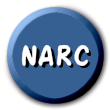Each year the Napier Amateur Radio Club designs a club project for it’s Hawkes Bay members. Following on from the very successful “Q” VHF/UHF Antenna project in 2014 we are going to release the “Q” Remote 4 port antenna switch kit for 2015.

The project is a remote antenna switch allows you to have one run of coaxial cable from the shack to your multiple antenna setup rather than multiple runs of coax. Most hams have a Tribander, a few dipoles and/or loops and maybe a vertical. Running RG213 coax from all of them back into the shack is expensive and can cause RF coupling between unused cables. The modern approach is to switch the antennas remotely with a switch-box at the base of the tower or in the garage and control it from inside the shack. Some photos below:



The “Q” 4 Port Antenna Switch kit set is supplied with a complete set of step by step instructions and the very highest quality components The kit complete with shack switch controller box and weatherproof outside relay enclosure box. Specifications below:
- High quality European designed PCB
- Input/output port isolation better than -69dB and loss is onlyl 0.05 dB at 28 Mhz
- Designed for 1 – 30 Mhz. Higher frequencies may be switched with slightly higher losses.
- Switch Relays are very high quality American designed Zettler relays with 20A contacts and 400VAC rating which will allow operation at 1.5KW CW/RTTY or 3000PEP power levels.
- SO-239 socket connectors are teflon insulated with gold centre pin.
- All hardware supplied including all screws and nuts etc
- The Shack Control box has 5 different coloured LEDS which easily shows what antenna you are actually using.
- 5 pin DIN sockets for power connections. CAT5 control cable may be used (not supplied)
- 12 VDC at 500ma wall wart power supply (not supplied)
- All parts supplied fully guaranteed for 1 year.
- Charts showing Isolation and insertion losses are below”

This shows the port isolation between antenna output
Commercial antenna switches range imported into ZL from $240 (cheaper unit) to around $500 (high quality). The “Q” Remote antenna switch target price will be $150 NZD which represents great value.
There will only be a limited number of these kits available from June 1. If interested please contact Lee, ZL2AL, project co-ordinator at leezl2al@gmail.com to register your interest.
73, Lee ZL2AL,
Napier Amateur Radio Club













